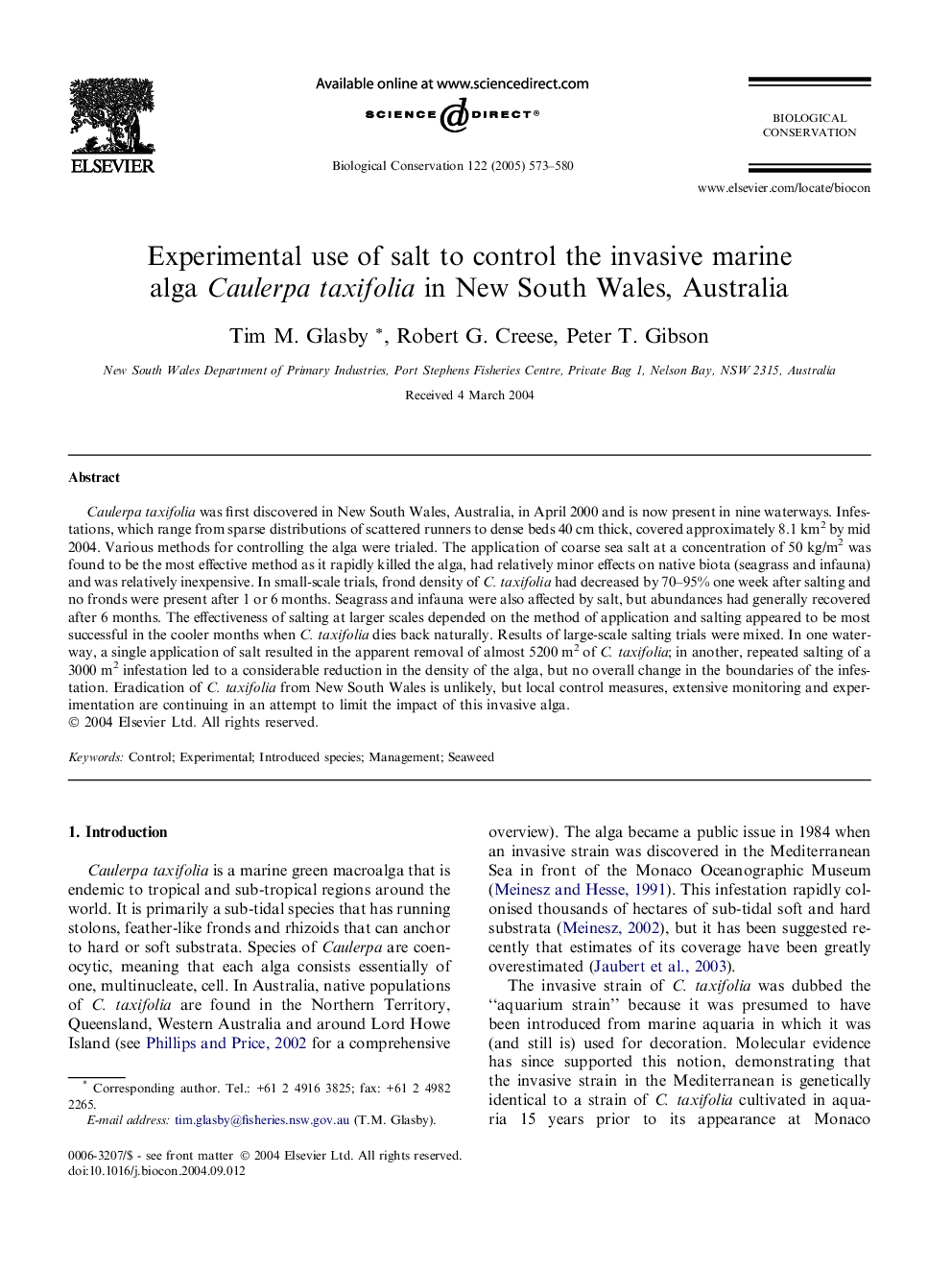| کد مقاله | کد نشریه | سال انتشار | مقاله انگلیسی | نسخه تمام متن |
|---|---|---|---|---|
| 9446104 | 1304648 | 2005 | 8 صفحه PDF | دانلود رایگان |
عنوان انگلیسی مقاله ISI
Experimental use of salt to control the invasive marine alga Caulerpa taxifolia in New South Wales, Australia
دانلود مقاله + سفارش ترجمه
دانلود مقاله ISI انگلیسی
رایگان برای ایرانیان
کلمات کلیدی
موضوعات مرتبط
علوم زیستی و بیوفناوری
علوم کشاورزی و بیولوژیک
بوم شناسی، تکامل، رفتار و سامانه شناسی
پیش نمایش صفحه اول مقاله

چکیده انگلیسی
Caulerpa taxifolia was first discovered in New South Wales, Australia, in April 2000 and is now present in nine waterways. Infestations, which range from sparse distributions of scattered runners to dense beds 40 cm thick, covered approximately 8.1 km2 by mid 2004. Various methods for controlling the alga were trialed. The application of coarse sea salt at a concentration of 50 kg/m2 was found to be the most effective method as it rapidly killed the alga, had relatively minor effects on native biota (seagrass and infauna) and was relatively inexpensive. In small-scale trials, frond density of C. taxifolia had decreased by 70-95% one week after salting and no fronds were present after 1 or 6 months. Seagrass and infauna were also affected by salt, but abundances had generally recovered after 6 months. The effectiveness of salting at larger scales depended on the method of application and salting appeared to be most successful in the cooler months when C. taxifolia dies back naturally. Results of large-scale salting trials were mixed. In one waterway, a single application of salt resulted in the apparent removal of almost 5200 m2 of C. taxifolia; in another, repeated salting of a 3000 m2 infestation led to a considerable reduction in the density of the alga, but no overall change in the boundaries of the infestation. Eradication of C. taxifolia from New South Wales is unlikely, but local control measures, extensive monitoring and experimentation are continuing in an attempt to limit the impact of this invasive alga.
ناشر
Database: Elsevier - ScienceDirect (ساینس دایرکت)
Journal: Biological Conservation - Volume 122, Issue 4, April 2005, Pages 573-580
Journal: Biological Conservation - Volume 122, Issue 4, April 2005, Pages 573-580
نویسندگان
Tim M. Glasby, Robert G. Creese, Peter T. Gibson,